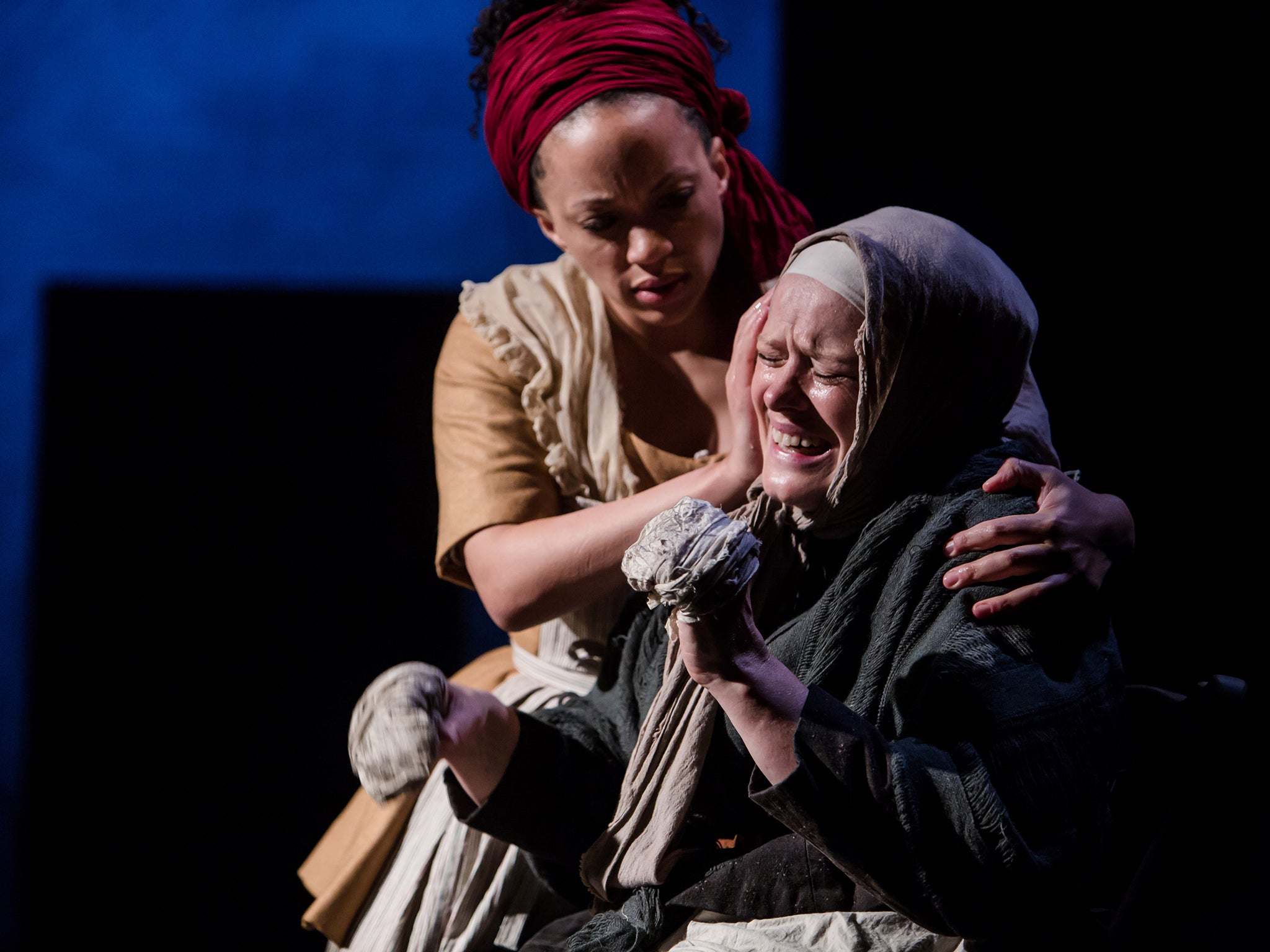Jane Wenham – Witch of Walkern, Arcola Theatre, London, review: A shrewd and compelling play
Tense production focuses on an 18th-century Hertfordshire village that has just hanged a woman for witchcraft
.jpg)
Rebecca Lenkiewicz's play is set in 1712, several decades after witch-hunts died out in England. But the Hertfordshire village of Walkern has just hanged a woman for witchcraft and it's not long before the finger of suspicion is pointing at one of the friends of the deceased, Jane Wenham, an eccentric old loner (beautifully played by Amanda Bellamy) who sells herbs for a living.
When she was a girl Jane had had one of her legs crushed as part of a brutal and unjust investigation into witchcraft; it's typical of the warped logic of the witch-finders that her strange, hampered way of walking is now judged sinister and held against her. These are the nonsensical standards of evidence.
The characters in Lenkiewicz's shrewd and compelling play divide into those who are just old enough to remember the atrocities inflicted on alleged witches and those whose zeal is undimmed by much first-hand knowledge of the barbarities. Not that some of the older folk have lost their relish for it. Setting the drama in this indeterminate snatch of revived witch-scare enables the dramatist to explore the seemingly abiding need in man to create scapegoats and to persecute people on the margins.

In Ria Parry's tense co-production (for Out of Joint; Watford Palace and the Arcola), this sense of snooping pressure is heightened by the device of having the villagers sit round the circular space, as if monitoring each other. The centrepiece of James Button's eloquent design is a composite wooden structure – half of which can be lit up as crucifix and half of which is a gallows. The structure grimly epitomises the interdependence of the Church and this industrial bloodletting
Convalescing in the parish, the liberal, sixty-something Bishop Hutchinson (excellent David Acton) recalls the height of the witch-scare and refuses to believe that there are such things as witched, pointing out that the rich never found themselves convicted and the hunts “were something akin to a brutal cleansing.. [of] the old, infirm, the poor”. You could impression that this character is Lenkiewicz's way of drawing modern parallels a tad too insistently but the play deals subtly and gently with Hutchinson's relationship with his female servant, a former slave from the Caribbean whom he taught to read and write. She is free, in law, to leave but, as Cat Simmons dignified, thoughtful performance suggests, the young woman has begun to grow restive from the lack of other options to fulfilling his requirements.
Hutchinson's tolerance is pitted against the hard-line zealotry of the handsome new chaplain, Samuel Crane. It's mildly disappointing that this young's man's repression is explained so broadly as a case of chronic virginity --”imploding with his unspent seed”. But Tim Delap does a very good job in communicating the intolerable build-up of humourless, smug certainty (“If she is a witch she will fly and save herself. It she is innocent we are simply sending her to God”). When a local baby dies, it's the chance's he's been longing.
To 30 Jan; 020 7503 1646
Join our commenting forum
Join thought-provoking conversations, follow other Independent readers and see their replies
Comments